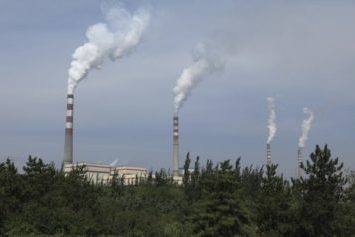On October 1, 2020, the EPA finalized a rule under the Clean Air Act (CAA) giving sources of major hazardous air pollution (HAP) a route to reclassify themselves as area sources subject to much less stringent requirements.
 The rule reverses a 1995 Clinton administration policy that was often referred to as the “once-in, always, in” policy, which provided a lifetime of being locked in to maximum achievable control technology (MACT) standards for sources of major air pollution like refineries and plants emitting pollutants such as lead, arsenic, and mercury.
The rule reverses a 1995 Clinton administration policy that was often referred to as the “once-in, always, in” policy, which provided a lifetime of being locked in to maximum achievable control technology (MACT) standards for sources of major air pollution like refineries and plants emitting pollutants such as lead, arsenic, and mercury.
The Agency estimates there are currently 7,183 facilities subject to major source emissions standards. “A ‘major source’ emits or has the potential to emit (PTE) 10 tons per year (tpy) or more of a single HAP or 25 tpy or more of a combination of HAP,” according to the EPA.
“This action reduces regulatory burden and provides a level of fairness and flexibility for sources that reduce HAP emissions below major source thresholds,” according to the final rule issued by the EPA.
“Today’s action is an important step to further President Trump’s regulatory reform agenda by providing meaningful incentives for investment that prevents hazardous air pollution,” said EPA Administrator Andrew Wheeler. “This rule, which follows on a 2018 guidance memorandum, will end regulatory interpretations that discourage facilities from investing in better emissions technology.”
According to the EPA’s fact sheet on the final rule, the Agency’s analysis includes two vastly different outcomes because of the change. “The potential emissions increase suggested by EPA’s illustrative analysis range from about 900 tpy to about 1,260 tpy. Note that this is not a projection, just one set of possible outcomes using a particular set of assumptions. Under an alternative scenario analyzed, this final rule could reduce emissions by about 180 tpy.”
According to John Walke, a senior attorney at the Natural Resources Defense Council, the rule will allow companies to emit more of “some of the most potent carcinogens and neurotoxins” the EPA previously reduced, according to an article in The Hill. “It’s especially outrageous because it’s 100 percent gratuitous: these are plants that have been complying with 95 to 98 percent reduction obligations, with already-installed [pollution] controls, for decades. It’s the triumph of extreme ideology over public health, common sense and the law,” he said.
The EPA argues that the previous policy discouraged facilities from modernizing and implementing voluntary pollution abatement and prevention efforts.
“Is industry going to try and save money and pollute more or spend more money and pollute less? I think that question answers itself,” Walke said in The Hill as he accused Wheeler of “magical thinking.”
U.S. Senator John Hoeven (ND) supports the change.
“EPA’s previous OIAI policy was a strong example of a counterproductive regulation, imposing costly requirements that hurt economic growth while also providing no incentive for businesses to reduce hazardous emissions,” Hoeven said. “This new rule is exactly the kind of regulatory relief that we’ve worked with the administration to provide, as it supports businesses in upgrading their operations with the latest technology, empowering a stronger economy and better environmental stewardship.”
By removing unnecessary monitoring, recordkeeping, and reporting associated with being a major source, the EPA states the rule will relieve unnecessary compliance and financial burdens from regulated entities and encourage other sources to reduce emissions. Emissions requirements will not change for existing major sources that choose not to reclassify.
The EPA estimates potential savings of $16.1 million in the first year and $90.6 million (in 2017 dollars) in the following years.
The 1995 rule resulted in the elimination of 1.7 million tons of HAP over two decades, according to a 2017 EPA fact sheet.
According to USNews.com, “Environmental groups said the change creates a ‘loophole’ for big industrial plants to pollute more, threatening low income communities that are often near such plants.”
Environmental groups have indicated they believe the change violates the CAA and have indicated they will file suit against the EPA over the change.
“This is a lawless action that will undoubtedly increase carcinogens and other deadly pollution in our air,” Clinton administration EPA head Carol Browner said in a statement. “Taking this action during a global pandemic that preys upon people with existing respiratory ailments further confirms that for Andrew Wheeler and the political leadership of the EPA the cruelty is the point.”
See the EPA website for more information on the rule.
